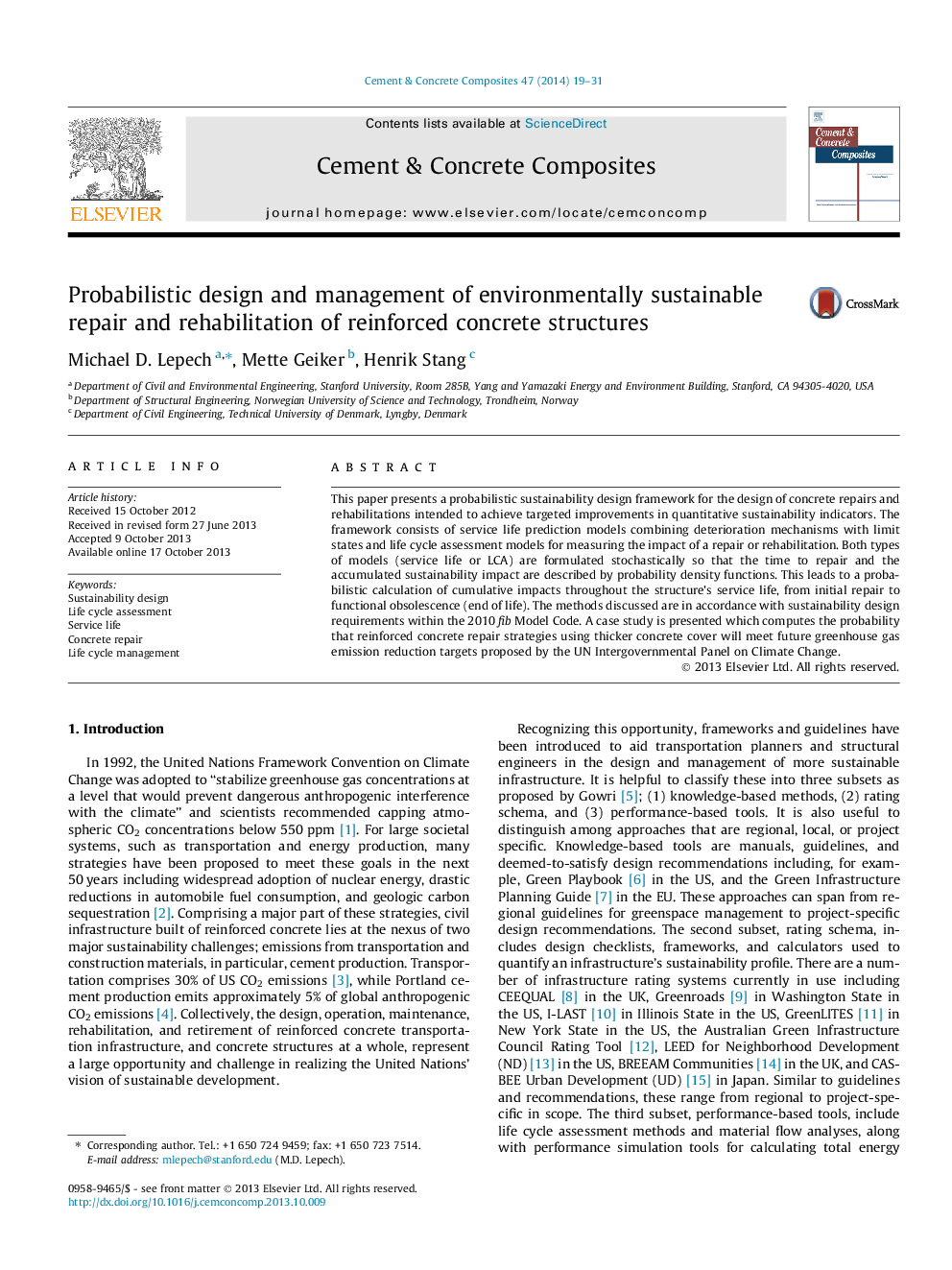| Article ID | Journal | Published Year | Pages | File Type |
|---|---|---|---|---|
| 1454765 | Cement and Concrete Composites | 2014 | 13 Pages |
This paper presents a probabilistic sustainability design framework for the design of concrete repairs and rehabilitations intended to achieve targeted improvements in quantitative sustainability indicators. The framework consists of service life prediction models combining deterioration mechanisms with limit states and life cycle assessment models for measuring the impact of a repair or rehabilitation. Both types of models (service life or LCA) are formulated stochastically so that the time to repair and the accumulated sustainability impact are described by probability density functions. This leads to a probabilistic calculation of cumulative impacts throughout the structure’s service life, from initial repair to functional obsolescence (end of life). The methods discussed are in accordance with sustainability design requirements within the 2010 fib Model Code. A case study is presented which computes the probability that reinforced concrete repair strategies using thicker concrete cover will meet future greenhouse gas emission reduction targets proposed by the UN Intergovernmental Panel on Climate Change.
